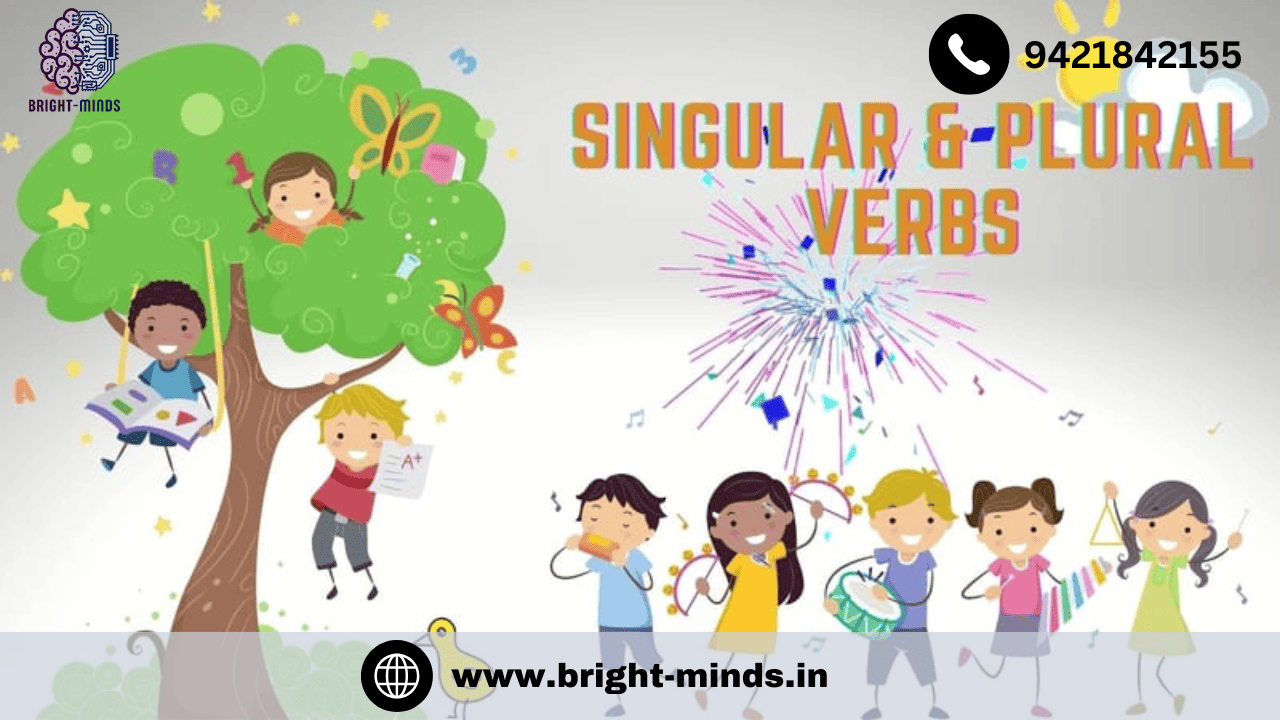Introduction
A crucial first step in teaching kids grammar is teaching them the difference between singular and plural nouns. Being aware of this difference improves their ability to communicate and helps them construct sentences correctly. Through interesting techniques, advice, and exercises, this site offers a thorough guide to assist young learners in mastering singular and plural nouns.
Understanding Singular and Plural Nouns
Singular and plural nouns: what are they?
- One person, location, object, or concept is referred to by a singular noun (e.g., dog, book, child).
- Multiple people, places, objects, or concepts are referred to by plural nouns (e.g., dogs, books, children).
Essential Guidelines for Creating Plural Nouns
- Add -s: The majority of nouns use -s to become plurals (cat → cats, for example).
- Add -es: Add -es to nouns that end in s, x, z, ch, or sh (box → boxes, for example).
- If a noun ends in a consonant plus y, turn the y to i and add -es (baby → babies, for example).
- Some nouns do not adhere to the norms of plural construction, such as mouse → mice and man → men.
Tips to Teach Singular and Plural Nouns
1. Start with Visual Aids
To demonstrate the distinction between singular and plural forms, use charts, flashcards, or pictures. For instance:
- One apple → Two apples.
- One dog → Three dogs.
2. Use Everyday Objects
Use tangible items, such as fruits, books, or toys, to illustrate pluralization. Children should be asked to describe and count what they observe.
- This is a single vehicle. There are five of these vehicles.
3. Introduce Simple Rules Gradually
Avoid giving children all the rules at once; instead, introduce them gradually. Move on to irregular forms after starting with basic -s and -es additions.
4. Emphasize Irregular Plurals Through Stories
Write stories using common irregular plurals, such as teeth, feet, and children. Children can better recall these exceptions when they are repeated in context.
5. Encourage Practice Through Writing
Give kids worksheets or writing exercises that require them to construct sentences with both singular and plural nouns. For example:
- Write the word “dog” in a sentence. Make it plural now!
Fun Games and Activities to Teach Singular and Plural Nouns
1. Singular-Plural Match-Up
Make a deck of cards featuring nouns in the singular form along with their plural forms. Ask children to accurately match them.
2. Plural Treasure Hunt
Throughout the room, conceal cards containing plural nouns. Children should locate the cards and determine each word’s singular form.
3. Fill-in-the-Blank Sentences
Give kids phrases that are lacking words and encourage them to complete them using the appropriate plural form. For instance:
- Three __ (cats) belong to the girl.
4. Sorting Game
First, arrange two boxes with the labels “Singular” and “Plural.” Assign children to sort a list of words into the appropriate boxes.
5. Story Creation Challenge
Encourage children to use a minimum of five plural nouns in their short tale. Give work and inventiveness rewards!
Interactive Tools and Resources
- Apps and Websites
- For interactive plural noun exercises, check out grammar applications such as ABCmouse or Grammarly for Kids.
- Songs and Rhymes
- Play instructional tunes that highlight pluralization. Make a jingle for “Add -s to make it more than one!” for instance.
- Videos and Animations
- Play entertaining videos that use animated characters to demonstrate singular and plural concepts.
Common Mistakes and How to Correct Them
- Adding -s to Irregular Plurals
- Mistake: children rather than children.
- Solution:Give them a list of irregular plurals and give them frequent quizzes.
- Confusion with Unchanging Nouns
- Mistake: sheeps rather than sheep.
- Solution: To reinforce the concept, use images or flashcards with constant nouns.
- Overgeneralization of Rules
- Mistake: mice rather than mice.
- Solution: Use targeted practice to teach irregular nouns separately.
Using Context to Reinforce Learning
Incorporate singular and plural nouns in everyday conversations:
- Could you give me a book?
- Let’s get three toys off the ground.
Read works that emphasize plural nouns through repeated phrases. For this, books like Red Fish, Blue Fish, and One Fish, Two Fish are great
Crafting a Grammar-Friendly Environment

1. Grammar Posters
Use vibrant charts that illustrate singular and plural rules to adorn the classroom or house.
2. Noun Journals
Encourage children to keep a journal in which they record new nouns, both singular and plural, that they come across on a regular basis.
3. Role-Playing Games
Provide settings that highlight plural nouns, such as children acting out stories or shopkeepers selling goods:
- Please give me two apples!
Benefits of Mastering Singular and Plural Nouns
- Improved Communication
- Better Communication Assists kids in creating grammatically sound statements.
- Enhanced Writing Skills
- lays the groundwork for improved descriptive writing and storytelling.
- Boosted Confidence
- Children who understand grammar norms are more comfortable speaking and writing.
Conclusion
- Developing good language skills requires mastering both singular and plural nouns. Preschoolers can learn effectively and enjoyably if parents and teachers use interactive tools, relatable examples, and engaging activities.
- Encourage consistent practice, give constructive criticism, and see how young students flourish as they establish a strong foundation in grammar. Transform ordinary situations into teaching opportunities and start the process of learning grammar!
Also Read:
https://bright-minds.in/unlocking-word-meaning-for-class-ukg-english-to-hindi/

